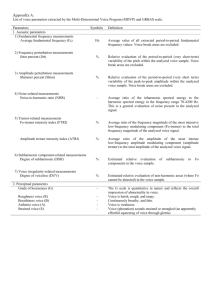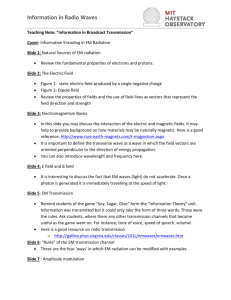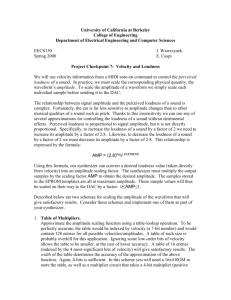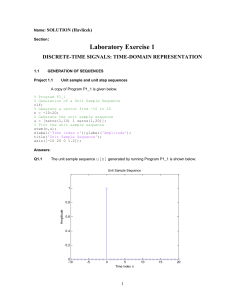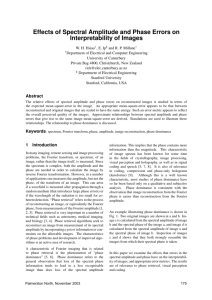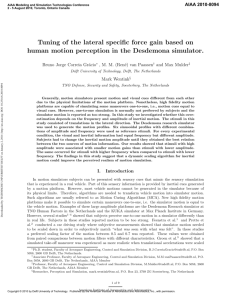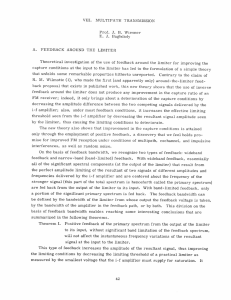August 29, 2007
advertisement
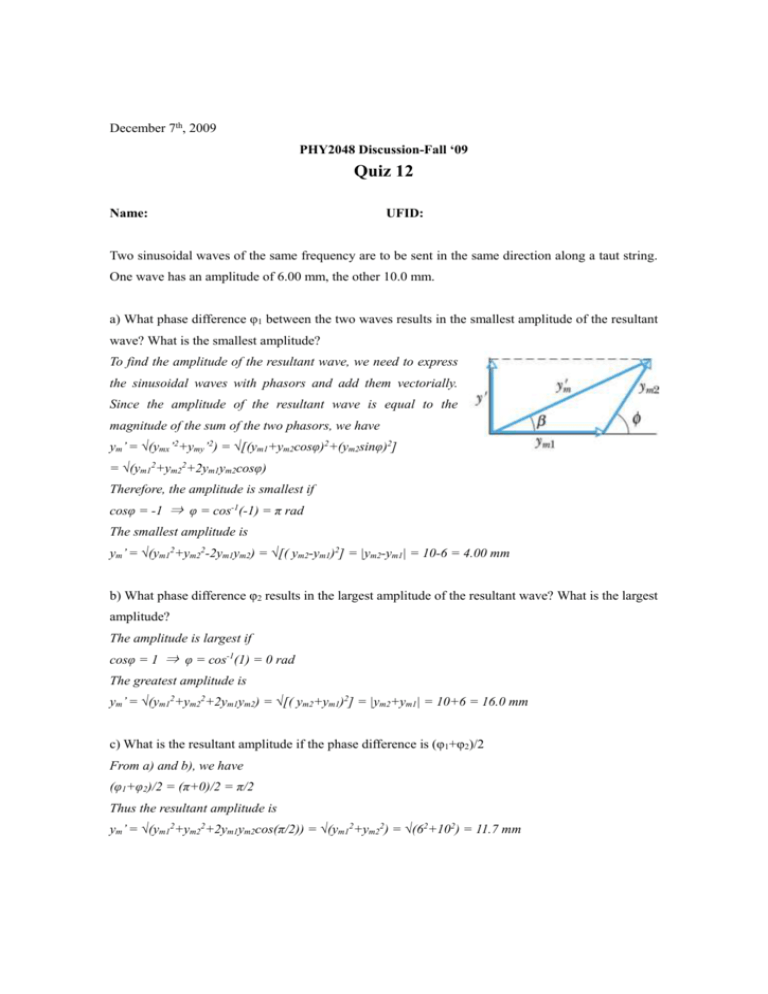
December 7th, 2009 PHY2048 Discussion-Fall ‘09 Quiz 12 Name: UFID: Two sinusoidal waves of the same frequency are to be sent in the same direction along a taut string. One wave has an amplitude of 6.00 mm, the other 10.0 mm. a) What phase difference φ1 between the two waves results in the smallest amplitude of the resultant wave? What is the smallest amplitude? To find the amplitude of the resultant wave, we need to express the sinusoidal waves with phasors and add them vectorially. Since the amplitude of the resultant wave is equal to the magnitude of the sum of the two phasors, we have ym’ = √(ymx’2+ymy’2) = √[(ym1+ym2cosφ)2+(ym2sinφ)2] = √(ym12+ym22+2ym1ym2cosφ) Therefore, the amplitude is smallest if cosφ = -1 ⇒ φ = cos-1(-1) = π rad The smallest amplitude is ym’ = √(ym12+ym22-2ym1ym2) = √[( ym2-ym1)2] = |ym2-ym1| = 10-6 = 4.00 mm b) What phase difference φ2 results in the largest amplitude of the resultant wave? What is the largest amplitude? The amplitude is largest if cosφ = 1 ⇒ φ = cos-1(1) = 0 rad The greatest amplitude is ym’ = √(ym12+ym22+2ym1ym2) = √[( ym2+ym1)2] = |ym2+ym1| = 10+6 = 16.0 mm c) What is the resultant amplitude if the phase difference is (φ1+φ2)/2 From a) and b), we have (φ1+φ2)/2 = (π+0)/2 = π/2 Thus the resultant amplitude is ym’ = √(ym12+ym22+2ym1ym2cos(π/2)) = √(ym12+ym22) = √(62+102) = 11.7 mm





